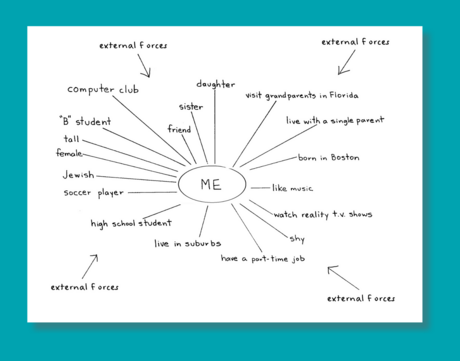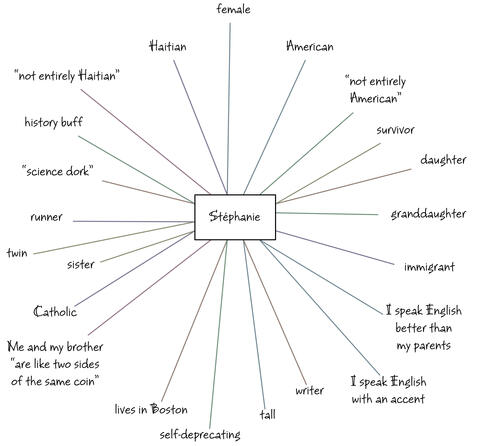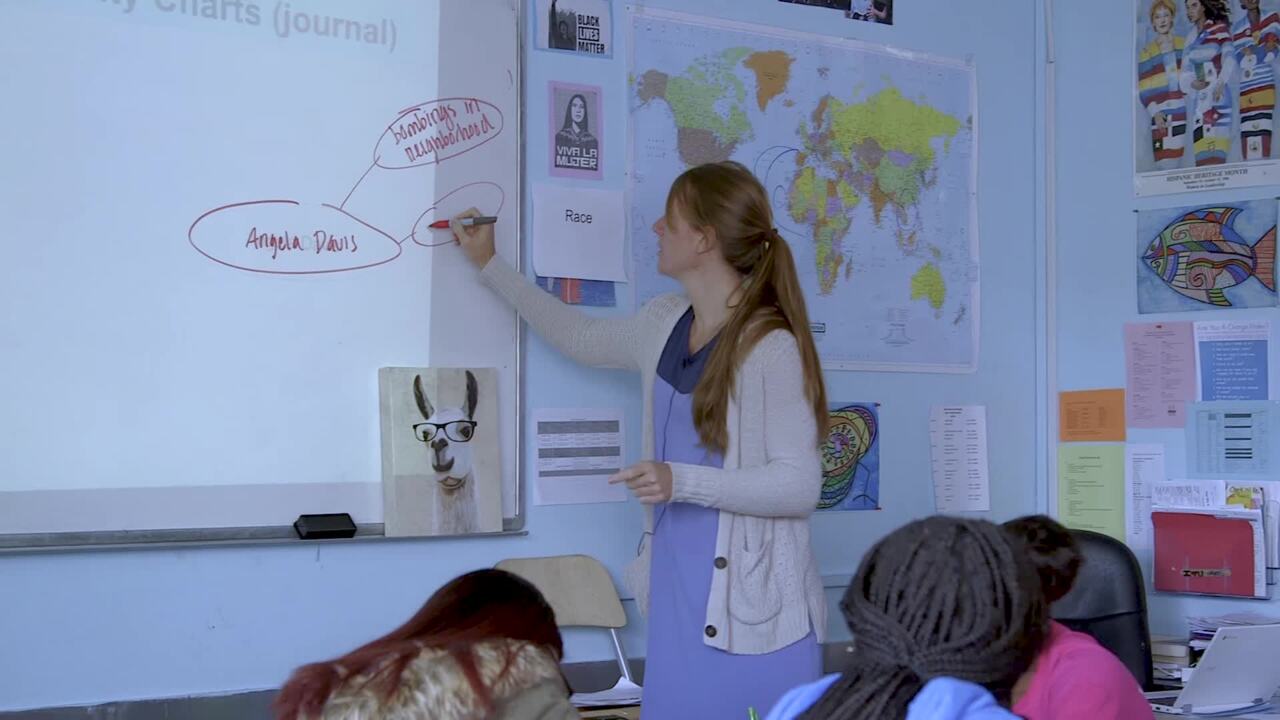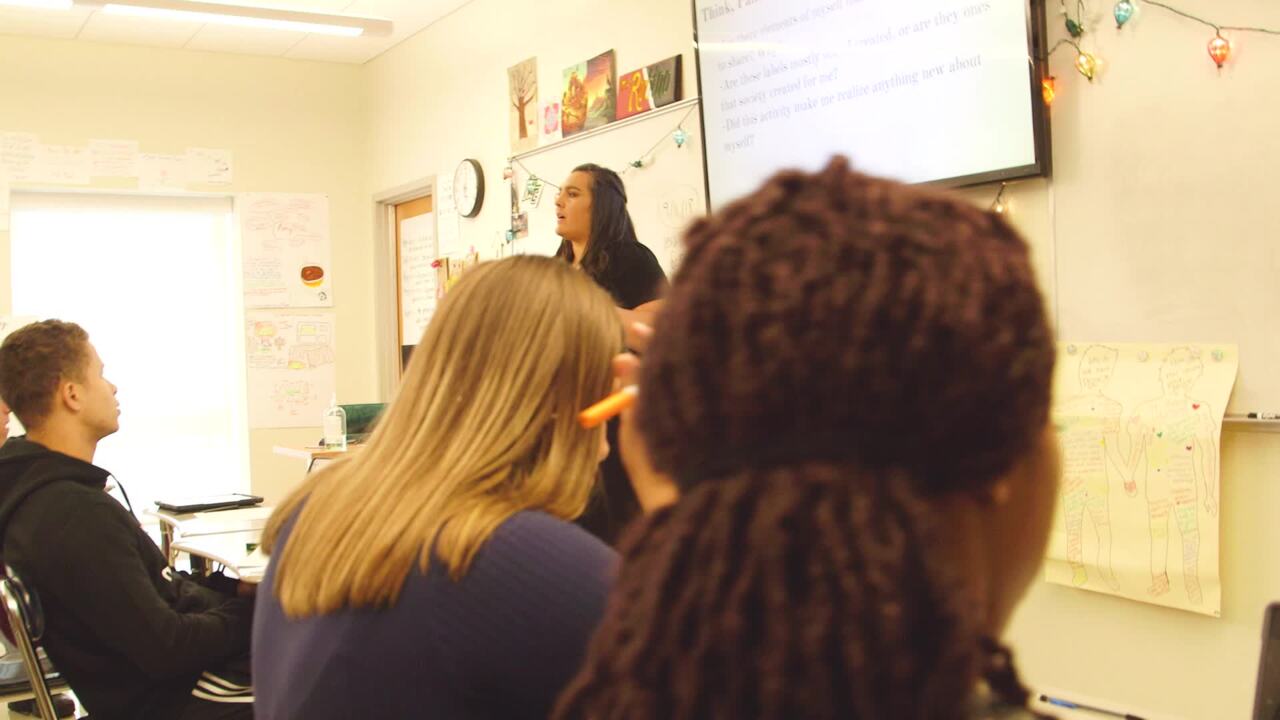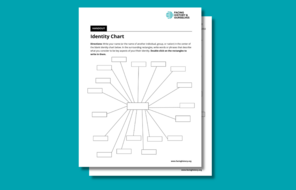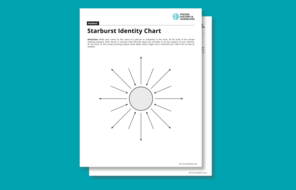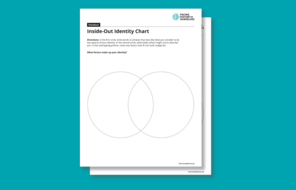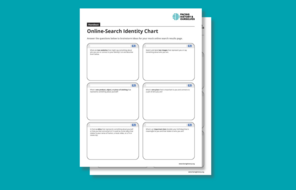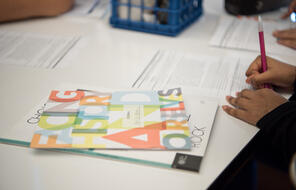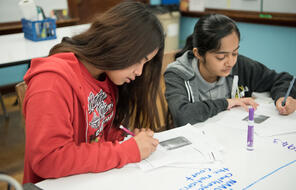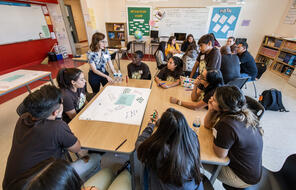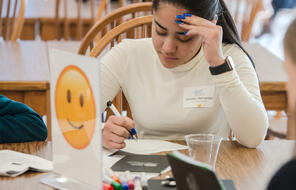Today, I'm going to introduce the concept of identity. And we're going to discuss how identity is shaped, not only by our perceptions of ourselves, but also about experiences that we have no control over. And the way that others perceive us.
And I really want them to understand that identity is fluid. It's not set in stone. And that's really important for this study, because we create identity charts for our main characters, and we update them throughout the course of the unit.
So let's start there, right? What is identity? Chase.
Who you are.
It's who you are. Good. Mattie?
It could be both legally, or personality-wise.
Did you say legally? It could be your legal identity, as well as personality. What do you mean by legal identity?
Like your date of birth and your driver's license, or something.
OK, gotcha. Yes ma'am, Jada.
Who you are on the inside.
Who you are on the inside. Such as what?
Your personality?
Your personality.
Like you.
OK. So most of what you all just said are things that we consider about ourselves, right? But what about the outside looking in? Right?
How everybody else sees us.
How everybody else sees us. How does that shape our identity? Jada?
Well, it takes a person's point of view for someone to look at you, and how you act, and how you behave. That's why we have a certain type of morals and manners in ourselves. To show others what we are. Because we might be taken for something different than what we see ourselves. So it's very important to act a certain way when you're around a certain person. So they won't go around and say certain things to ruin your reputation as a person.
OK. So what Jada said, she puts a lot of importance into the way that others perceive us, and I would agree. I think that most of us do that. Most of us are going to act a certain way to hopefully be perceived a certain way. Good, thank you.
I'm going to wrap around this way, go to Erica next.
Sometimes it can shape your confidence. If someone were to say something nice about you, it would make you more confident about yourself. But if someone were to insult you all the time it would bring you down.
OK. Thank you. Zoe?
Off what Erica said, it goes back to-- there's a study on it, and it was on hockey players. If people tell hockey players that, hey, you're a really good hockey player, from a young age, then they're going to be like, wow, I should practice more. I'm going to be a lot better of a hockey player. And most professional hockey players have gotten that sort of-- what's it called?
Motivation?
Yeah, motivation or--
Encouragement?
There we go! Thank you! You're very helpful today. But they've gotten that sort of encouragement, whereas if people are like, well, you're good, you know. Or said, you're not that great at hockey. You might be like, why bother. So I think that kind of shapes you as well. What people think of you will actually move you to do what you do.
Good. So that's called self-efficacy, right? That's a psychology term you guys will learn more about as you progress in school. But the way that others interact with us, and the confidence that we either gain or lose based on that, absolutely has a lot to do with how we build our identities. Did you want to-- Spencer.
Going along with what Jada said, if this is for me, and I was Francis, I thought I acted one way, but everybody kept saying you're actually acting this way. And it did affect me and I did realize I actually am kind of acting this way. So I need to change myself. So yeah, other people's point of view can actually help you become a better person because then you realize what you actually act like, not what you think you act like.
OK. So the view of others can be negative, but it could also be positive in shaping our identity. Thank you. Mattie?
Kind of going off what Spencer said, but going on the negative connotation with identity, lots of people, especially in this time period that the book's in, lots of people looked at your race or your culture. And then they judged you based on whatever that was. If you're white, then they're like, oh, you're OK. But if you're black, they put you down and stuff. And so negative connotations can sometimes make people stronger. Because they're like, no, you're wrong. So they try to get themselves to be even better, and stronger, and stronger. So negative could help, but it could also bring someone down.
OK. Good, thank you. Thank you for bringing up that point. Yes, Kelsey.
Sometimes when someone looks at you, they might start to stereotype. And then they'll get this idea in their head, and then they won't realize what you're really like, because they're stereotyping. So that's another negative connotation to how people sometimes act. That's why sometimes people don't always want to communicate with you or talk to you. Because they have those stereotypes in their head about what type of person you may be.
Great. And we'll definitely be getting into stereotypes with our unit on To Kill a Mockingbird, and also with our pre-reading as this week progresses. Jada?
Just to wrap this whole thing up, it also depends on-- you have a higher class of people that tell the middle class or the lower class to-- since this class is different from us, we should probably treat them different because they're not like us. Where they're not the same as we are. So I want you guys to degrade them because they're not the same as us.
Even though we're all humans, we don't necessarily act the same, but we are the same as one being. So that higher class is like, oh, I'm offended by this class, because they're not us. So that image, it comes from one generation to the next and it spreads like a wildfire. Because that class has much power over any other class. So once that gets around, then that's how something starts. And it just corrupts the system.
Excellent. Great comment, Jada. We are going to be looking at 'us' and 'them' with this unit as well. So you guys are right on track with that.
I think that it's important to start with identity right off the bat, because part of the goal for me teaching this unit is to motivate students to really want to take charge of their lives, and their decisions, and the things that they say, the things that they wish to do. And I think grounding the unit in your own identity is a great place to start. And then again, building on that, and looking at how characters' identities are built and change will be helpful for the students.
